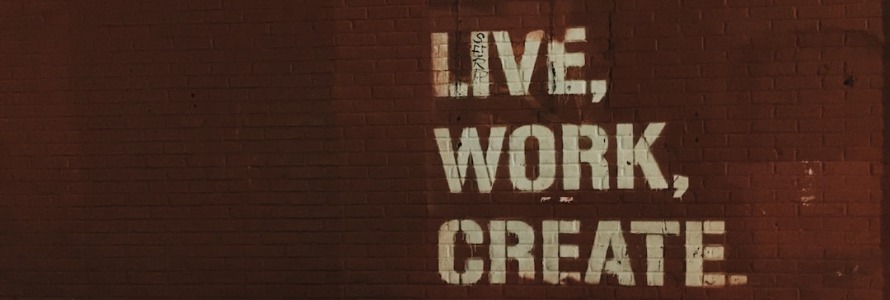
When I first started writing, I underestimated the importance of editing. I would craft a piece, feel satisfied with my initial draft, and move on, assuming my work was complete. Over time, however, I learned the hard way that skipping the editing process often left my writing riddled with errors, inconsistencies, and missed opportunities to truly connect with my audience. Editing, I’ve come to realize, is not just a finishing touch—it’s an essential step that transforms a rough draft into polished, effective communication.
Editing as a Process of Refinement
Editing isn’t just about catching typos or grammatical errors, though that’s certainly part of it. More importantly, it’s about refining your ideas, ensuring clarity, and enhancing the overall impact of your writing. When I edit, I ask myself: Is my message clear? Have I expressed my thoughts as effectively as possible? Does my writing align with the needs and expectations of my audience? These questions guide me in identifying areas where my writing falls short and where I can make improvements.
For instance, I once wrote a blog post that I thought was compelling and insightful. However, after revisiting it with fresh eyes, I noticed that my points lacked organization, and my transitions were clunky. Through editing, I reorganized the structure, clarified my arguments, and strengthened my transitions. The result was a piece that resonated far more deeply with readers.

Why First Drafts Are Rarely Perfect
First drafts serve an important purpose: they allow us to get our thoughts down on paper without inhibition. However, they are rarely perfect. In my experience, first drafts often contain redundant phrases, awkward sentence structures, and ideas that need further development. This is why editing is crucial. It’s the stage where I can take my initial ideas and refine them into something cohesive and impactful.
One of my mentors once told me, “Good writing is rewriting.” That advice has stuck with me. When I revisit my first drafts, I’m often surprised by the number of improvements I can make. Editing gives me the opportunity to step back, evaluate my work critically, and make it better.
Types of Editing
Over time, I’ve learned that editing isn’t a one-size-fits-all process. There are different types of editing, each serving a unique purpose:
- Developmental Editing: This involves looking at the big picture. Are the ideas well-organized? Is the argument compelling? Does the piece achieve its purpose?
- Line Editing: Here, the focus is on the flow and style of the writing. Are the sentences engaging and varied? Is the tone appropriate for the audience?
- Copyediting: This is where grammar, spelling, and punctuation come into play. It’s about ensuring accuracy and consistency in language usage.
- Proofreading: The final step in the editing process, proofreading involves catching any remaining errors before publication.
Each of these stages is essential, and skipping any one of them can compromise the quality of your writing. Personally, I’ve found that dividing my editing process into these distinct stages helps me focus on specific aspects of my work and ensures nothing gets overlooked.
The Role of Feedback in Editing
One of the most valuable lessons I’ve learned about editing is the importance of seeking feedback. No matter how experienced I become as a writer, I know that a second set of eyes can offer insights I might have missed. Whether it’s a colleague, a mentor, or a professional editor, getting someone else’s perspective can be invaluable.
For example, I once wrote a short story that I felt was well-crafted. However, after sharing it with a peer, they pointed out that the protagonist’s motivations were unclear. This feedback prompted me to revisit the story, add depth to my character, and ultimately create a more compelling narrative.
Editing Enhances Credibility
In professional writing, editing plays a crucial role in establishing credibility. Errors, inconsistencies, and unclear language can undermine your authority and distract from your message. As someone who frequently writes for business audiences, I’ve learned that polished, well-edited content builds trust and demonstrates professionalism.
Imagine reading an article riddled with typos and grammatical mistakes. Would you trust the author’s expertise? Probably not. On the other hand, a carefully edited piece signals that the author values quality and attention to detail, which can go a long way in building credibility.

Time and Patience: The Keys to Effective Editing
Editing requires time and patience. Early in my writing journey, I often rushed through the editing process because I was eager to publish my work. However, I’ve learned that good editing takes time. Setting a piece aside for a day or two before revisiting it can provide the fresh perspective needed to spot areas for improvement.
One strategy that works well for me is breaking the editing process into smaller, manageable sessions. Instead of trying to tackle everything at once, I focus on one aspect at a time—for instance, addressing structure in one session and polishing language in another. This approach not only makes the process less overwhelming but also ensures thoroughness.
The Digital Age: Tools and Resources for Editing
In today’s digital age, there are numerous tools and resources available to aid the editing process. While these tools can’t replace the human touch, they can certainly enhance efficiency and accuracy. Some of my favorite tools include:
- Grammarly: Great for catching grammar and spelling errors, as well as offering suggestions for improving clarity and style.
- Hemingway Editor: Useful for identifying overly complex sentences and passive voice.
- ProWritingAid: Offers in-depth analysis of writing, including readability and style suggestions.
- Microsoft Word’s Track Changes: Ideal for collaborating with others and keeping track of edits.
While these tools are helpful, I always make a point to review my work manually. Automated tools can sometimes miss nuances or make suggestions that don’t align with the intended tone or style.
Editing as a Learning Opportunity
One of the unexpected benefits of editing is how much I’ve learned from the process. Each time I edit, I become more aware of my writing habits, both good and bad. For example, I’ve noticed that I tend to overuse certain phrases or rely on filler words. By identifying these tendencies, I’ve been able to improve my writing over time.
Editing also provides an opportunity to learn from others. When I review edits suggested by a colleague or editor, I often gain insights into new techniques or perspectives that I can apply to future projects.
Conclusion: Why Editing Matters
Editing is an indispensable part of the writing process. It’s the stage where ideas are clarified, errors are corrected, and good writing becomes great. Whether you’re crafting a blog post, a business report, or a novel, skipping the editing process is a disservice to your work and your audience.
For me, editing has become a rewarding practice that not only improves my writing but also deepens my understanding of language and communication. It’s a step I’ll never skip again, and I encourage every writer to embrace it fully. Remember: good writing may start with inspiration, but great writing is achieved through editing.

References
American Psychological Association. (2020). Publication manual of the American Psychological Association (7th ed.). Washington, DC: Author.
Harper, S. (2019). The writer’s guide to editing and revision. New York, NY: Writing Press.
Smith, L. (2021). “The value of editing in professional writing.” Journal of Communication Studies, 35(2), 123-130. https://doi.org/10.1080/12345678.2021.987654321


